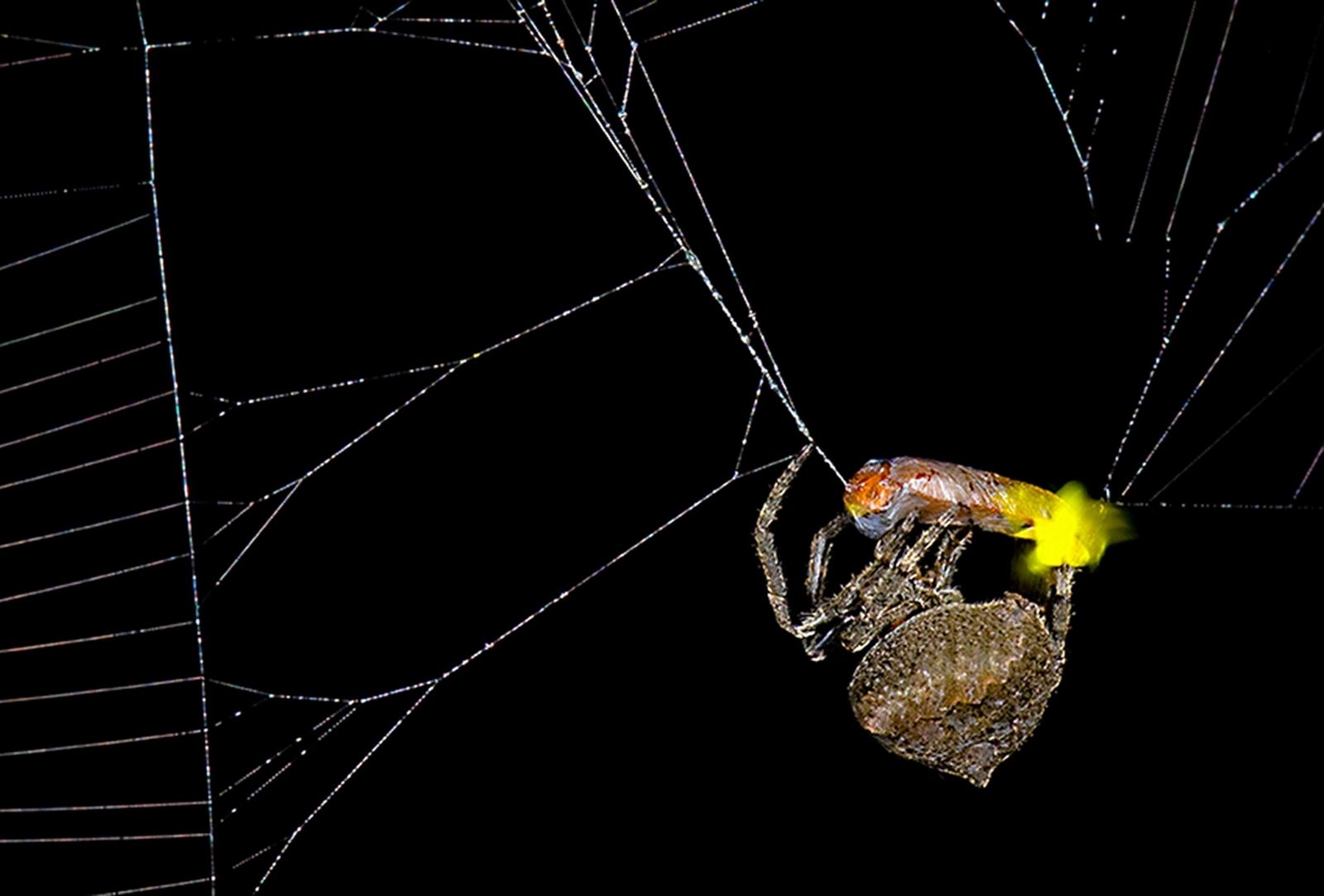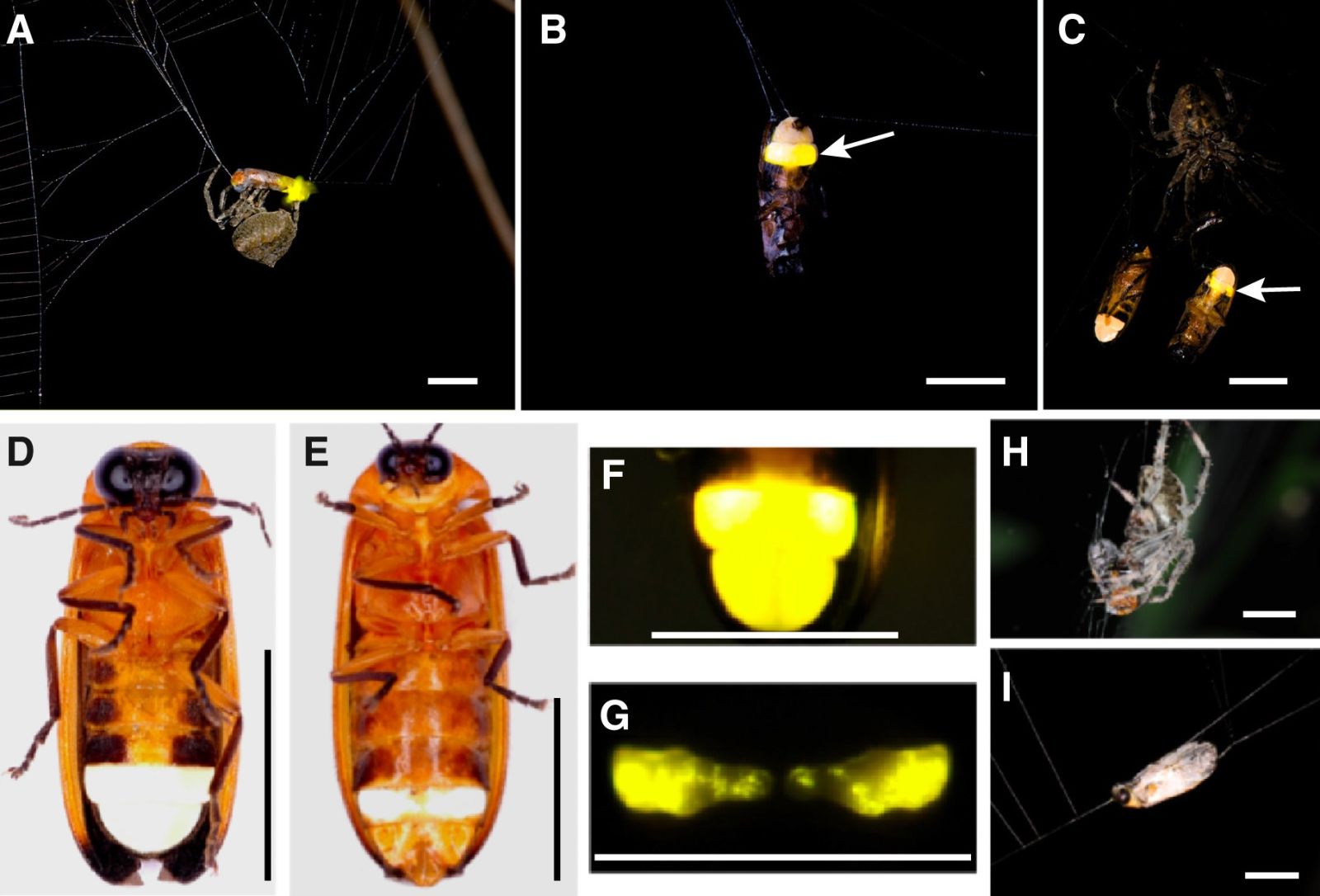This spider manipulates firefly light to attract other prey
Published by Cédric,
Article author: Cédric DEPOND
Source: Current Biology
Other Languages: FR, DE, ES, PT
Article author: Cédric DEPOND
Source: Current Biology
Other Languages: FR, DE, ES, PT
Follow us on Google News (click on ☆)

Fireflies use light signals for reproduction, with males emitting multiple flashes to attract females, and females emitting a single flash to attract males.
However, researchers observed that male fireflies captured by Araneus ventricosus altered their light signals, making them resemble those of females. This deceives other males who then head toward the web, believing they are approaching a potential mate. This manipulation by the spider is particularly ingenious, as it increases the number of prey captured.
The research team, led by Xinhua Fu of Huazhong Agricultural University, studied 161 spider webs in Hubei province, China. They found that the trapped male fireflies emitted light signals different from those of free males, mimicking the signals of females. The spiders seem to influence this behavior by biting the fireflies and injecting a small amount of venom. This process might trigger a nervous reaction in the firefly, prompting it to emit these false signals.
However, questions remain about the exact way spiders cause these changes in light signals. While this study provides some answers, it also highlights the need for further research to fully understand the role of the spider's venom and its effects on the fireflies' nervous system.

Dinesh Rao, a researcher at Universidad Veracruzana, while acknowledging the interest of this discovery, calls for caution. According to him, an in-depth neurobiological study is necessary to confirm the spiders' direct role in altering the light signals. Kathryn M. Nagel, a doctoral candidate at the University of California, Berkeley, shares this view and emphasizes that other factors might be involved.
The results of this study demonstrate the complexity of interactions between spiders and their prey, illustrating how inventive nature can be. The Araneus ventricosus spider, by manipulating firefly light signals, shows that even organisms considered "simple" can develop sophisticated hunting strategies.